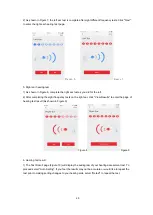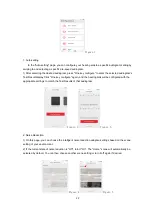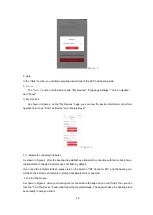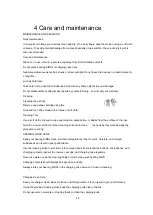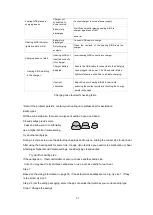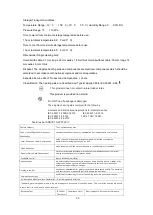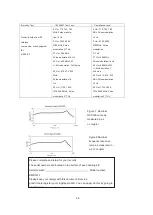
34
RF emissions CISPR 11
Group 1
Group 1
The hearing aid uses RF energy only for
its internal function.Therefore, its RF
emissions are very low and are not likely
to cause any interference in nearby
elec tronic equipment.
RF emissions CISPR 11
Class B
Class B
The hearing aid is suitable for use in all
establishments, including domestic
establishments and those directly
connected to the public low-voltage power
supply net work that supplies buildings
used for domestic purposes.
Guidance and
Manufacturer’s Declaration – Electromagnetic Immunity
The hearing aid is intended for use in the electromagnetic environment specifiedbelow. The user of the
hearing aid should assure that it is used in such an environment.
Immunity Test
IEC60601 Test Level
Compliance Level
Electrostatic discharge (ESD)
IEC 61000-4-2
+/- 8 kV contact
+/- 15 kV air
+/- 8 kV contact
+/- 15 kV air
Radiated RF EM Fields
IEC 61000-4-3
10 V/m
80 MHz
– 2.7 GHz
80% AM at 1 kHz
10 V/m
80 MHz
– 2.7 GHz
80% AM at 1 kHz
Measurements per ANSI S3.22:2014 (or per
ANSI/CTA-2051:2017 where denoted with *)
Result
Maximum output (OSPL90) curve
See Figure 1
Maximum output (OSPL90)
112dB SPL
Fitted OSPL90
Up to 105 dB SPL
High-frequency average (HFA) OSPL90
105 dB SPL
High-frequency average
full-on gain (HFA-FOG)
35dB
Reference test gain
27 dB
Frequency response curve
See Figure 2
Frequency range
< 250
–
>
5000 Hz
Harmonic distortion
< 5% typical,
Equivalent input noise
< 25dB SPL typical,
Battery current drain
5 mA
Latency*
10 ms

